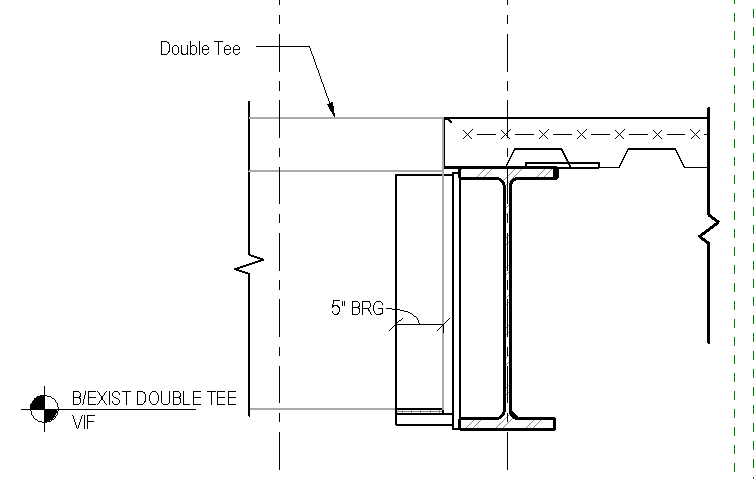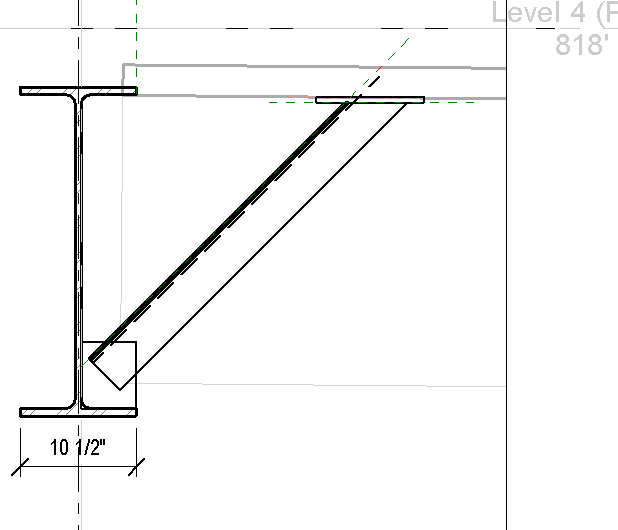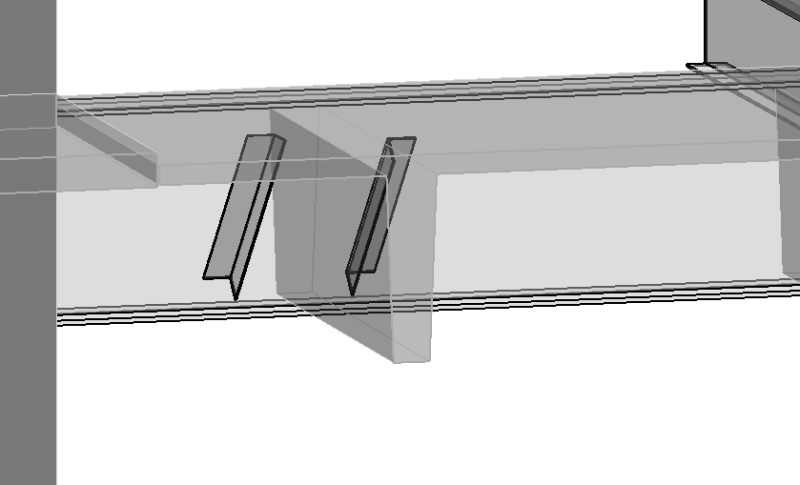sticksandtriangles
Structural
I am trying to brace a beam for torsion where I am cutting off a double tee to bear on steel beam. The saddle connection has a good bit of eccentricity so torsion is a big concern.

I was wondering if a detail that I have shown below would be considered a brace for torsion.


Hopefully you can make sense of what is going on.
I would have one angle each side of the connection and some plate that was anchored into the precast double tee for the angle to connect to.
On one hand, I could this transferring shear like a normal shear connection, not helping for torsional bracing at all, but on the other hand I could see this double sided angle providing a brace for torsion if the beam wanted to kick out of plane in torsion.
Any thoughts on the matter would be appreciated.

I was wondering if a detail that I have shown below would be considered a brace for torsion.


Hopefully you can make sense of what is going on.
I would have one angle each side of the connection and some plate that was anchored into the precast double tee for the angle to connect to.
On one hand, I could this transferring shear like a normal shear connection, not helping for torsional bracing at all, but on the other hand I could see this double sided angle providing a brace for torsion if the beam wanted to kick out of plane in torsion.
Any thoughts on the matter would be appreciated.

